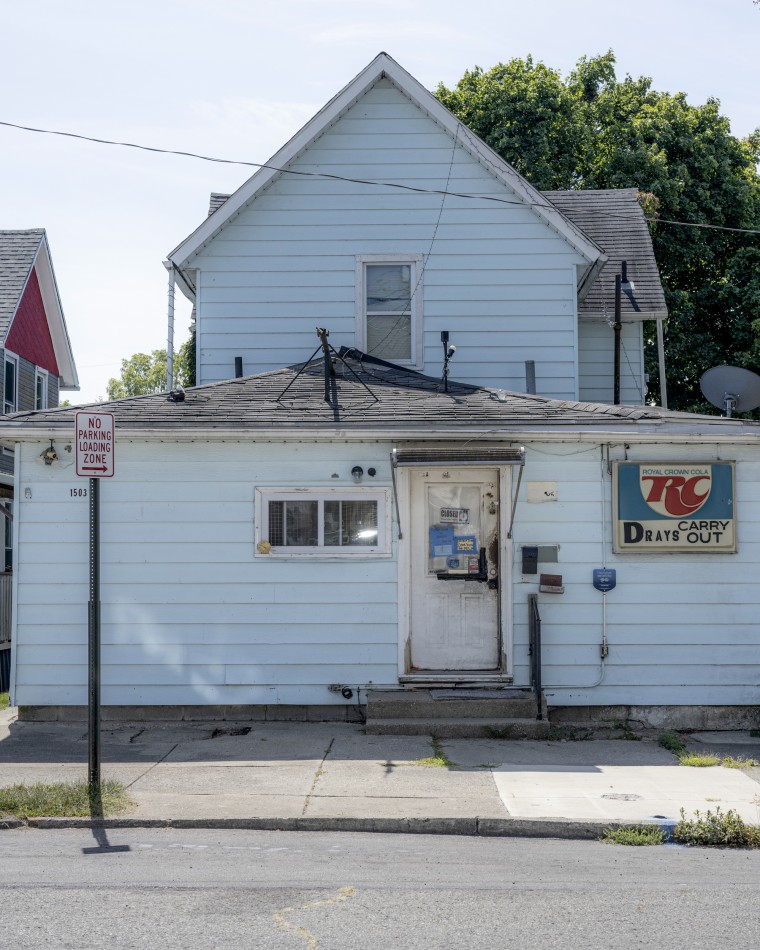Five days in Ohio: False immigrant rumors threaten to unravel an American town on the upswing

But Springfield’s fortunes appear to be on the rise. New housing is cropping up throughout the city. Businesses are opening, and downtown Springfield after dark is growing more lively.
Jones credits some of the revitalization to the Haitians and other immigrants.
“I see jobs now that weren’t available,” she said. “I feel good because I see things happening again in my community.”
Boom, bust, and boom again
Springfield has more recently made headlines of late for outlandish reasons, but in many ways the city is representative of wider national trends. It’s a once-prosperous place that is still getting back on its feet, a phenomenon that was felt across the Midwest starting in the 1980s.
That renewed prosperity and the ensuing population growth has meant strains on local infrastructure, health care and schools.
Between 12,000 to 15,000 Haitians who fled political turmoil and violence in their home country landed in Springfield over the past five years, arriving in the U.S. under a federal humanitarian program for migrants, according to the city. Others are in the U.S. on tourist visas and green cards.
“Many of them were professionals, medical doctors, attorneys, teachers, engineers, you name it,” said Sophia Pierrelus, an immigration advocate who left the Haitian capital of Port-au-Prince nearly two decades ago. “Culture shock happens for both Americans and Haitians.”


Jims Denis moved to Springfield five years ago after hearing about the low cost of living from his brother, who had already relocated to the city from Haiti. Denis and his family secured tourist visas through his father, who worked at the U.S. Embassy in Haiti, he said.
Denis, who now has a green card that allows him to live and work in the U.S. permanently, owns three homes in Springfield, including two that he rents out for extra income. He also has two jobs, working as an electronics technician and operating a photography studio in Springfield. His wife is in nursing school.
“I came here and worked very hard for what I have,” he said. “I live below my means and I invest. But people think Haitians aren’t smart enough to do what I do.”
He said when he arrived in Springfield, it was a “dead city” of abandoned buildings and vacant lots. When more immigrants started to move in, he saw an opportunity for Springfield to grow into a place where he and his young family could rebuild their lives.
Up until a few weeks ago, Denis and his wife spent their free time riding their bikes around town or taking their young children to the park. Now his wife is afraid to leave their home and is pleading with him to move.
There are some in the community who hope people like Denis do move.
Bill Monaghan, a Springfield resident who helps manage a Facebook page called “Stop the Influx Into Springfield, Ohio,” said Haitian immigration has been “disastrous for the working class and the working poor.”
Rent has increased as some landlords see an opportunity to charge per person rather per household, a claim supported by several immigration advocates and local renters.
Waits at the local health care clinic and the department of motor vehicles have also increased, and wait times for emergency services are taking longer, he said.
“It’s just entirely too many people all at once,” he told NBC News. “People are losing their housing to migrants. The roads are becoming unsafe.”
Local officials acknowledge the sudden arrival of so many immigrants has put a strain on local services as the city struggles to keep up with increased demand on health care and housing.
 Print
Print


